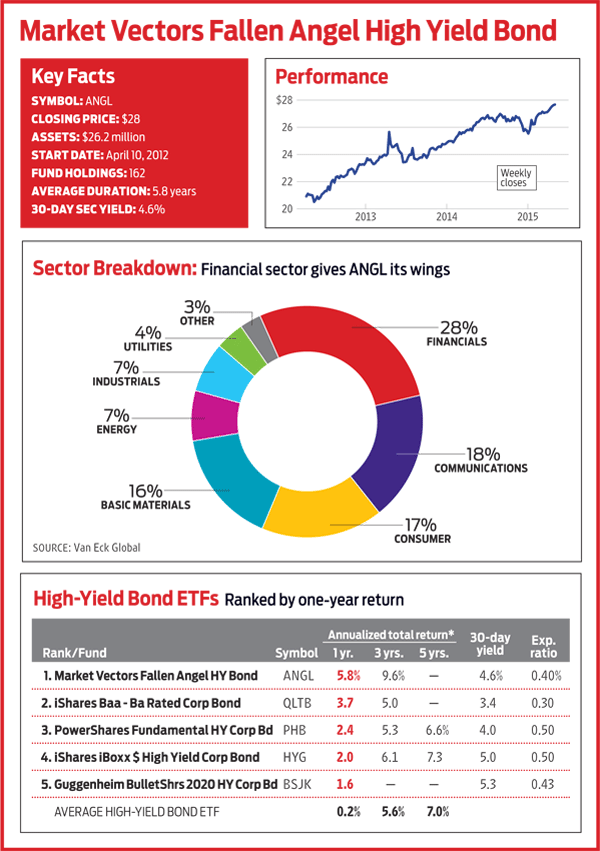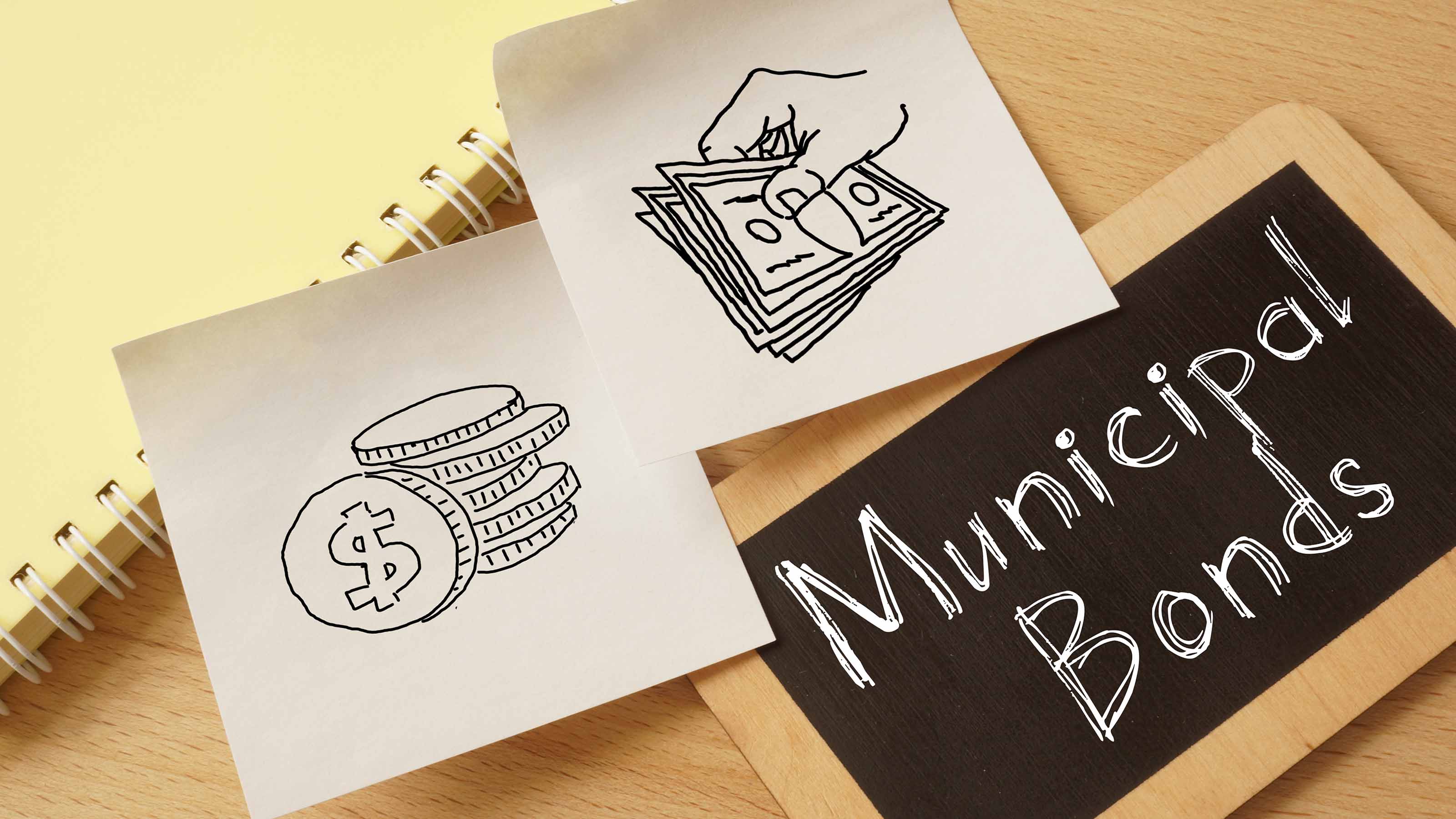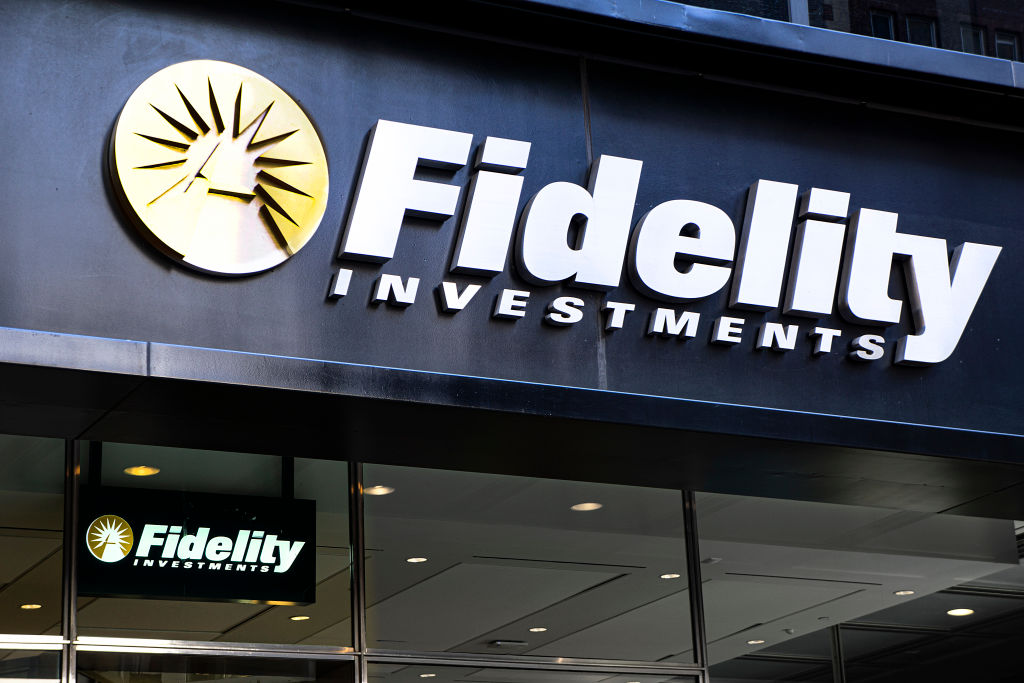A Unique Strategy to Prosper From Junk Bonds
Market Vectors Fallen Angel High Yield Bond ETF has topped most junk funds by owning bonds that were once high-grade.

Junk bonds appeal to investors who are willing to accept more risk in exchange for superior yields. But a subset of the high-yield universe—bonds that were issued with investment-grade ratings but have since descended to junk status—has delivered blissful results of late. Over the past five years, an index of these “fallen angel” bonds has returned an annualized 10.6%, crushing the broad U.S. bond market by an average of 6.5 percentage points per year and traditional junk bonds by 3.6 points per year.
A way to play formerly high-grade IOUs is Market Vectors Fallen Angel High Yield Bond ETF (symbol ANGL). The exchange-traded fund holds debt from 162 issuers. Nearly three-fourths of its assets are in bonds that occupy the highest rung of the junk ladder (those rated double-B), more than twice that of the typical high-yield bond ETF. “Weak balance sheets, poor management, a loss of market share or other troubles brought these fallen angels into the index,” says manager Fran Rodilosso. “But the companies still tend to have valuable assets.”
Thanks to the collapse of oil prices, several energy companies earned their wings as fallen angels this year. As a result, the fund’s stake in bonds issued by energy firms, such as Transocean and DCP Midstream Partners, has increased in recent months. Other top holdings include bonds of loan servicer Sallie Mae and aluminum maker Alcoa.
From just $107.88 $24.99 for Kiplinger Personal Finance
Become a smarter, better informed investor. Subscribe from just $107.88 $24.99, plus get up to 4 Special Issues

Sign up for Kiplinger’s Free Newsletters
Profit and prosper with the best of expert advice on investing, taxes, retirement, personal finance and more - straight to your e-mail.
Profit and prosper with the best of expert advice - straight to your e-mail.

Profit and prosper with the best of Kiplinger's advice on investing, taxes, retirement, personal finance and much more. Delivered daily. Enter your email in the box and click Sign Me Up.

-
 AI Stocks Lead Nasdaq's 398-Point Nosedive: Stock Market Today
AI Stocks Lead Nasdaq's 398-Point Nosedive: Stock Market TodayThe major stock market indexes do not yet reflect the bullish tendencies of sector rotation and broadening participation.
-
 Top Tech Gifts to Grab at Walmart Before Christmas
Top Tech Gifts to Grab at Walmart Before ChristmasBig savings on Apple, Bose, HP, Vizio and more while there's still time to shop.
-
 AI Appliances Aren’t Exciting Buyers…Yet
AI Appliances Aren’t Exciting Buyers…YetThe Kiplinger Letter Artificial intelligence is being embedded into all sorts of appliances. Now sellers need to get customers to care about AI-powered laundry.
-
 What Fed Rate Cuts Mean For Fixed-Income Investors
What Fed Rate Cuts Mean For Fixed-Income InvestorsThe Fed's rate-cutting campaign has the fixed-income market set for an encore of Q4 2024.
-
 The Most Tax-Friendly States for Investing in 2025 (Hint: There Are Two)
The Most Tax-Friendly States for Investing in 2025 (Hint: There Are Two)State Taxes Living in one of these places could lower your 2025 investment taxes — especially if you invest in real estate.
-
 The Final Countdown for Retirees with Investment Income
The Final Countdown for Retirees with Investment IncomeRetirement Tax Don’t assume Social Security withholding is enough. Some retirement income may require a quarterly estimated tax payment by the September 15 deadline.
-
 Dividends Are in a Rut
Dividends Are in a RutDividends may be going through a rough patch, but income investors should exercise patience.
-
 Municipal Bonds Stand Firm
Municipal Bonds Stand FirmIf you have the cash to invest, municipal bonds are a worthy alternative to CDs or Treasuries – even as they stare down credit-market Armageddon.
-
 High Yields From High-Rate Lenders
High Yields From High-Rate LendersInvestors seeking out high yields can find them in high-rate lenders, non-bank lenders and a few financial REITs.
-
 Time to Consider Foreign Bonds
Time to Consider Foreign BondsIn 2023, foreign bonds deserve a place on the fringes of a total-return-oriented fixed-income portfolio.
-
 The 5 Best Actively Managed Fidelity Funds to Buy and Hold
The 5 Best Actively Managed Fidelity Funds to Buy and Holdmutual funds Sometimes it's best to leave the driving to the pros – and these actively managed Fidelity funds do just that, at low costs to boot.